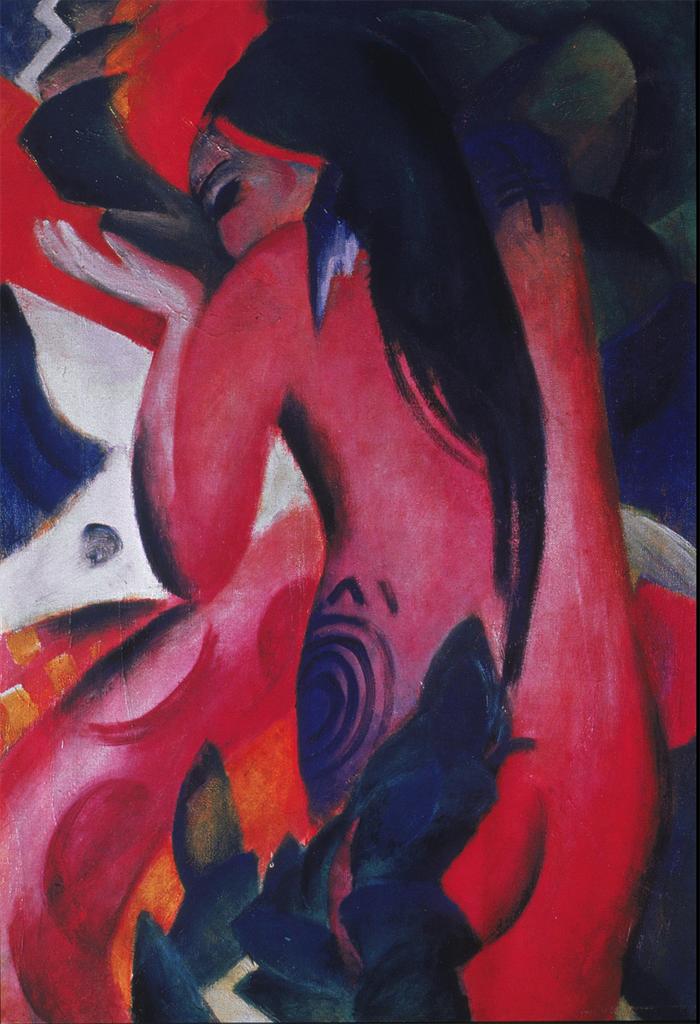Fabio Viale’s Tattooed Sculptures
Sculptor Fabio Viale, whose works from earlier this decade coaxed mundane objects such as tires and grocery sacks from Carrara marble, has more recently turned his attention to embellishing his works with colorful “body modifications.”
Viale’s project over the past five years involves re-creating actual-size replicas of famous works known from antiquity, most Roman copies of Greek original works, such as the Venus de Milo and the Aphrodite Knidos, and decorating them with colorful “tattoos.” The tattoos take their inspiration from traditional designs from Japan as well as variations upon designs from the international criminal underworld.
Born in Cuneo, Italy in 1975, Viale lives and works in Torino, Italy, where he studied sculpture.
Tattoos have long held fascination for modern and contemporary artists. The practice of irreversibly marking the skin by puncturing the dermis and inserting an indelible pigment, tattooing is found in almost every culture worldwide. The earliest surviving examples of tattooed human skin come from 12th Dynasty Egypt (c. 1938–c. 1756 BCE), but tattooing was also popular in the later dynasties and would have been very familiar to the Romans, who, coincidentally, also commissioned many of the “original copies.”
The Imperial Romans themselves used the tattoo as a means of identifying slaves and punishing criminals. However there are historical references to decorative and religious tattoos of other citizens, particularly of initiates into the cults of Orpheus and Bacchus. The practice in the British Isles of tattooing the body with zoomorphic designs was also noted by the Romans from the First Century.
In the decorative tattoo art of Europe, North America, and Japan, complex and often large-scale designs are created with black and colored inks injected into the skin with a metal needle. In cultures where metal was not readily available, needle-like instruments, such as sharpened sticks, bone fragments, or thorns, were used.
In Europe and North America, until the late 20th Century, tattooing was largely connected with two groups: members of the armed forces and prisoners. From the 1960s onwards, however, changes in the social status of tattoo art led to considerable experimentation with forms and styles. The repertory expanded to include designs influenced by other tattoo traditions, especially those of Oceania.
Reference: Dominic Montserrat. “Tattoo.“ Grove Art Online. Oxford art Online. Oxford University Press.
Fabio Viale, Various sculptures with tattoos, 2014-2017. Photos: Sperone Gallery, Sent, Switzerland and Sperone Westwater Gallery, New York City.
Full set of traditional tattooing needles, Japan, 20th Century. Each tool holds a bunch of needles, varying in number from only a few to a dozen or more. The tattoo master chooses the one that suits his purpose, either to make outlines, to etch in details, or to cover a large area with color. Photo: University of California, San Diego.
Les Petits, Dancing Characters And Pink Pyramid,2012-2013. Sticker / Street Art, Düsseldorf, Germany. Photo: Richard F. Brush Art Gallery.
Clark & Sellers (American, active 20th century), Tattoo Design with a Dragon and Snake (Inspired by Japanese Examples), 1945. Pen and Ink Drawing. The Metropolitan Museum of Art. Nr. 18392772.
Franz Marc, Rote Frau, 1912. NewWalk Museum & Art Gallery, Leicester.
Further Reading: Tristan Manco. Make your Mark: The New Urban Artists. London: Thames & Hudson Ltd., 2016.
Beverly Yuen Thompson. Covered in Ink – Tattoos, Women and the Politics of the Body. New York: NYU Press, 2015.
Posted by Jean Marie Carey








Is there anyway to contact Fabio Viale?
His body of work is amazing!
You could try Instagram. His handle is @vialefabio or email info@fabioviale.it